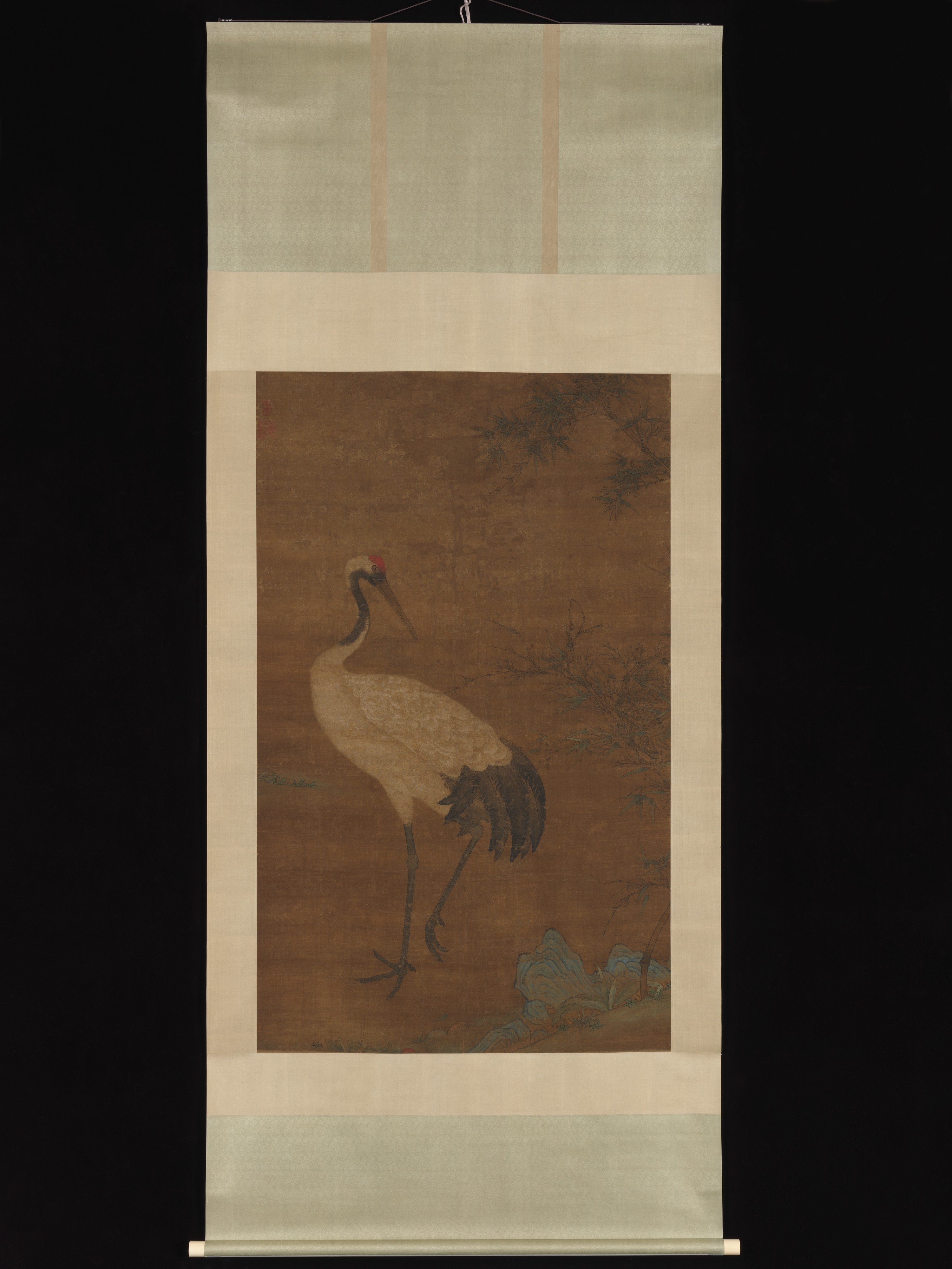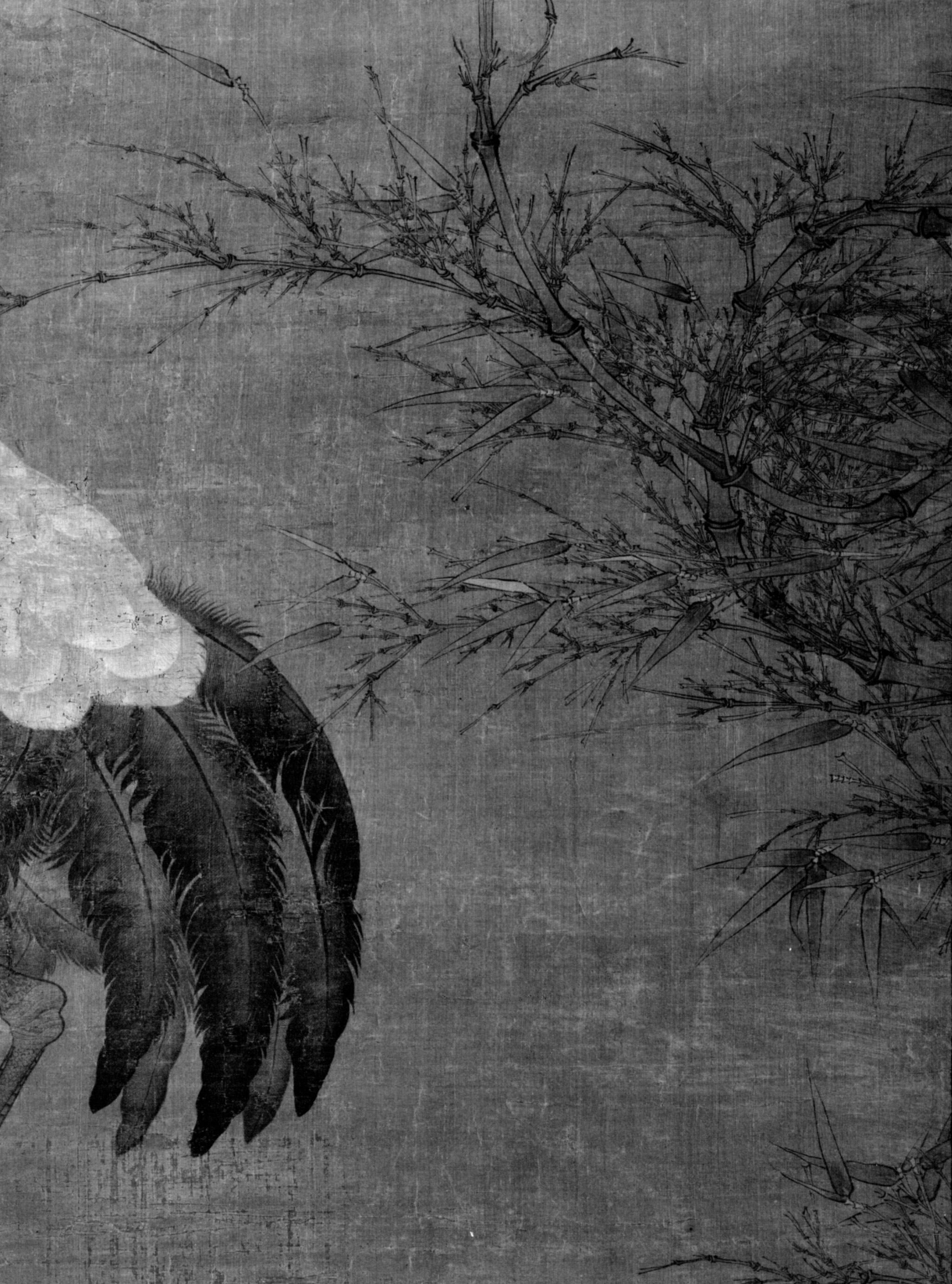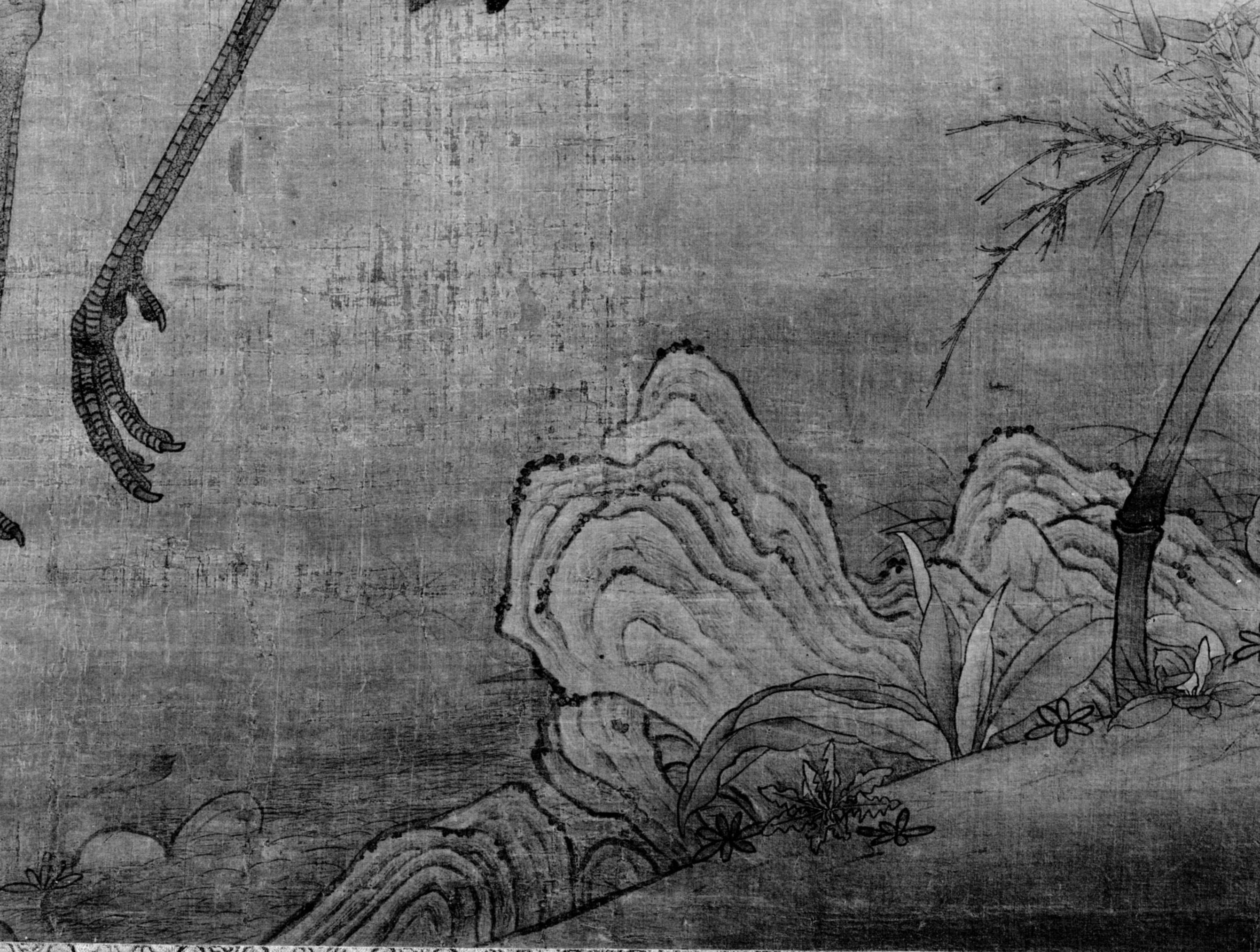Crane in a bamboo grove
Not on view
A favorite image in Chinese society and a familiar presence in imperial gardens as well as refined scholarly retreats, cranes were also renowned as the vehicles of Daoist immortals. Their long life span and loyalty to a single mate made them symbols of longevity and faithfulness. Here, a Manchurian crane, identified by its distinctive red forehead, strolls through a corner of the palace garden. Stopping in midstride and turning its head, the bird has just been startled by a branch of bamboo that has brushed against its tail feathers.
One of only a handful of such large-scale images of birds to survive from the late Yuan or early Ming dynasty, this painting derives its subject from a composition by the emperor Huizong (r. 1100–25), who painted a set of six cranes in different poses. The complex branch structure of the twisting bamboo and the intricate detail of the bird's plumage—with every filament of the feathers carefully delineated—reveal a level of naturalistic description that predates the more conventionalized images of cranes created by the Ming court painter Bian Wenjin (ca. 1354–1428).
This image cannot be enlarged, viewed at full screen, or downloaded.
This artwork is meant to be viewed from right to left. Scroll left to view more.





